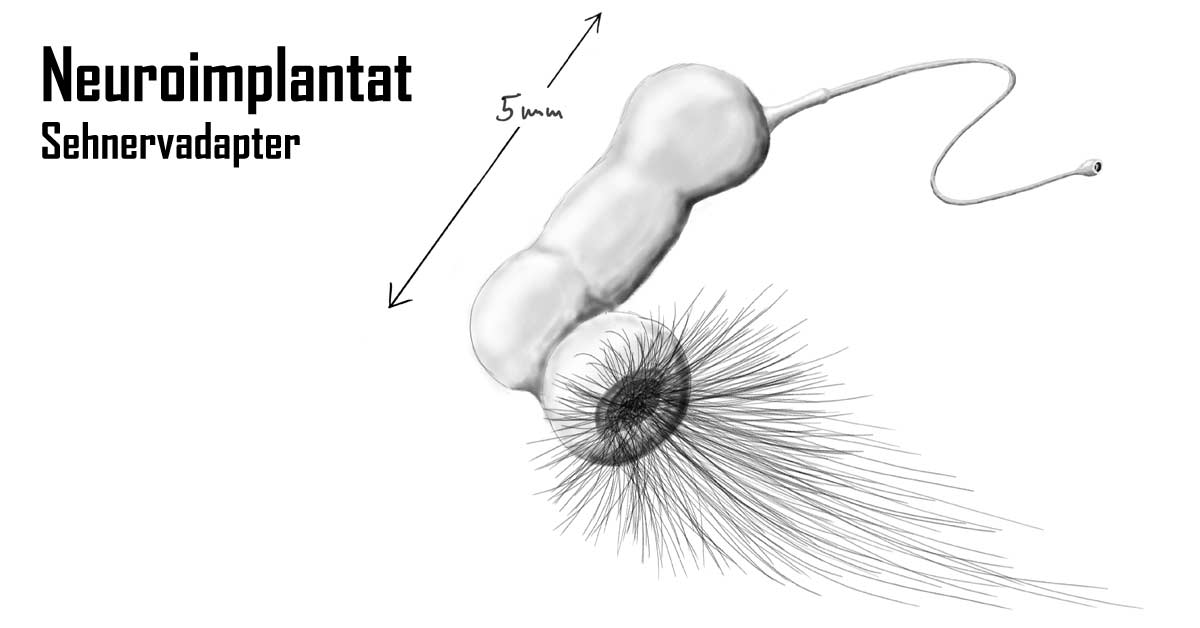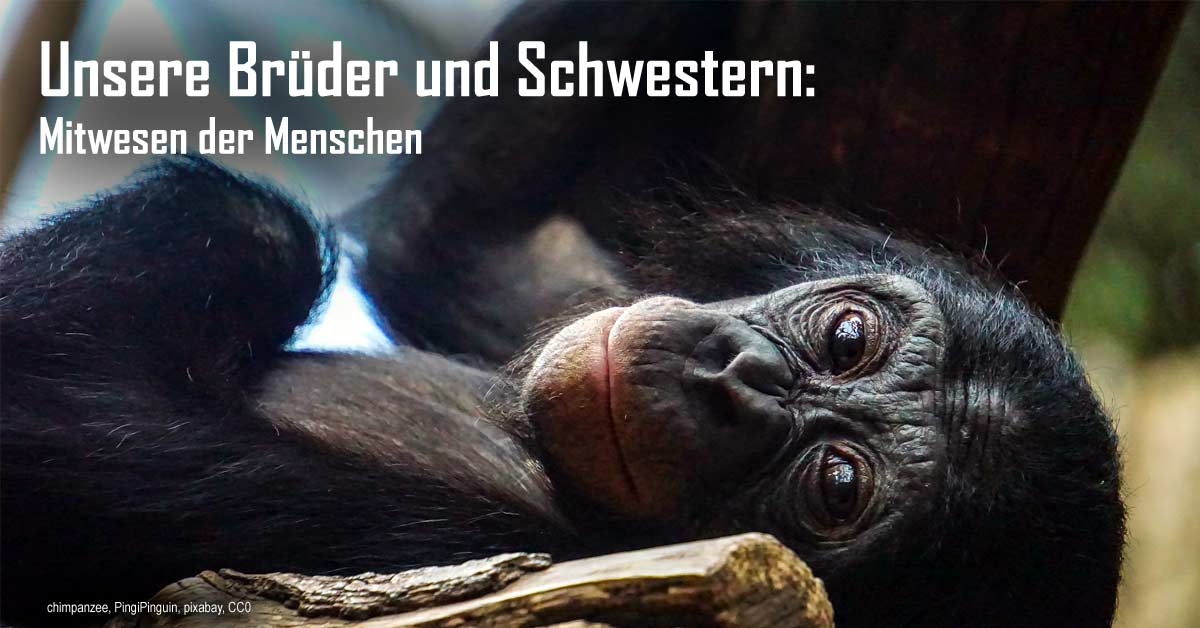
2051 Mikromechanisches Neuroimplantat. Chengdu/China

Das einzige erhaltene Modell des Sehnervadapters der Serie-H eines mikromechanischen AV-Neuroimplantats vom Chengdu Zentrum für Medizintechnologie.
Das Implantat speist künstliche Signale in Seh- und Hörnerven ein. Es stammt aus der 22. klinischen Versuchsreihe, die vor allem zum Ziel hatte, blinden und tauben Menschen zu helfen. Das Gerät besteht aus fünf Komponenten, je zwei für Seh- und Hörnerven sowie ein zentrales Steuerungsmodul. Die Elemente sind jeweils etwa fünf Millimeter groß. Sie werden in einer Operation weitgehend minimalinvasiv in den Zielregionen im Kopf platziert.
Nach der operativen Installation verbinden sich Mikrofasern mit den lokalen Neuronen. Im Gegensatz zu modernen Nanoimplantaten geschieht dies mit einem "Erst schießen dann fragen"-Ansatz, d.h. alle Neuronen werden angeschlossen und dann erst analysiert. Nach der Verbindungsphase folgt die Kalibrationsphase in der die Funktion der Neuronen getestet wird. A priori sind die Funktionen einzelner Neuronen und Neuronenbündel nicht bekannt. Mit der Kalibration werden Neuronen (und Kombinationen von Neuronen) zu Gesichtsfeld-Elementen (Pixeln) und Frequenzen zugeordnet.
Eine wesentliche Neuerung der achten Serie (Modell-H) war der autarke Betrieb ohne externe Stromversorgung und ohne Batterie. Die Geräte werden durch chemische Mikroreaktoren betrieben, die Blutzucker aus dem Blutkreislauf entnehmen. Das Implantat wird drahtlos mit Daten versorgt.
Neben der Energieversorgung war auch die Auflösung bahnbrechend. Das gesamte Gesichtsfeld hatte 300 k Pixel plus 50 k Pixel im Fokuspunkt. Damit konnte man Bilder mit bis zu 600 Pixel erzeugen oder entsprechend schematische Zeichnungen und Texte über das natürliche Bild einblenden.
Mikromechanische Neuroimplantate waren die Vorläufer der Nanoimplantate, mit denen später Slinks (Sensory-Links), also Aufzeichnung und Wiedergabe von Sinneswahrnehmungen bis hin zur Vollsimulation möglich wurden.
2052 Personenrechte für Primaten

Als erstes Land beschließt Island, Primaten als Personen anzuerkennen. Einige, speziell benannte Primatenarten werden rechtlich Kleinkindern gleichgestellt. Damit erhalten sie theoretisch die Menschenrechte, vor allem Persönlichkeitsrechte (Leben, körperliche Unversehrtheit) und Freiheitsrechte. Wenn nötig, bekommen sie einen Vormund, der ihre Rechte vertritt. Praktisch müssen ihre Rechte in Einzelfällen vor Gericht erstritten werden. Aber wenn ein Vormund entscheidet, dass ein bestimmter Schimpanse nicht im Käfig gehalten werden soll, dann stehen die Chancen gut, dass ein Gericht dem Antrag stattgibt, basierend auf dem Selbstbestimmungsrecht.
Das Gesetz ist sehr weitreichend. Mit der neuen Einordnung von Primaten werden auch andere Tiere aufgewertet. Einige Arten mit relativ hohen kognitiven Fähigkeiten werden zwar nicht als Personen, aber immerhin als nichtmenschliche Wesen eingeordnet. Darunter sind Oktopus, Elefant, Delfin, einige Wale, Wolf, Hund, und einige Haustiere. Diese Tiere werden nun nicht mehr als "Sache" betrachtet, die immer einem Menschen gehört, sondern als "Wesen", einer neuen Klasse rechtlicher Entitäten neben dem Menschen und den "Sachen". Damit sind Individuen dieser Arten nicht mehr automatisch das Eigentum von Menschen oder juristischen Personen.
Eine dauerhafte Kommission wird eingerichtet, um über die Auswahl der Arten zu entscheiden. Die Kommission ist besetzt mit Vertretern vieler gesellschaftlicher Gruppen. Sie bewertet die Selbsterkenntnis, soziales Verhalten, Planungsfähigkeiten, die Fähigkeit zu sprechen (durch Laute oder Zeichensprache), Ursache und Wirkung zu erkennen, Innovation, Imitation und Lernverhalten. Das Althing (das isländische Parlament) gibt explizit vor, dass in der Diskussion der Kommission nur neue Erkenntnisse verwendet werden dürfen, die nach der wissenschaftlichen Methode (Beobachtung-Hypothese-Test) gewonnen werden. Explizit ausgeschlossen werden damit traditionelle und kommerzielle Argumente, also "das war schon immer so", bzw. "das steht in alten Schriften" oder "das können wir uns nicht leisten". Im Jahr 2062 kommen – gegen den Widerstand der Lebensmittelindustrie – auch Nutztiere dazu. Damit wird die Haltung von Schweinen zur Fleischproduktion praktisch illegal.
"Wie sollen wir mit Wesen umgehen, die sich im Spiegel erkennen, die um Gefährten trauern, die ein Bewusstsein für sich als Individuum haben? Verdienen sie es nicht, dass wir sie so behandeln wie andere, genauso empfindsame Wesen: uns selbst?" – Jane Goodall.
Es war ein langer Weg vom Verbot von Pelzfarmen, Legebatterien und Tierversuchen für Kosmetika am Anfang des 21. Jahrhunderts bis zur ersten vollen Anerkennung als Person durch einen souveränen Staat.
Auch vorher gab es schon Einzelfälle in denen Tieren Rechte zugesprochen wurden. In Indien sind Tiere schon lang als "Wesen" (im Gegensatz zu "Sachen") geschützt. Auch in Deutschland hatten Tiere Rechte, die allerdings in der Praxis oft hinter kommerziellen Argumenten zurücktreten mussten. In den 20er und 30er Jahren bekam die Bewegung für Tierrechte (NHR, non human rights movement) immer mehr Zulauf. Skandinavien, Neuseeland, Bhutan und Ecuador beschlossen Rechte für Tiere, sowie Ausbeutungs- und Misshandlungsverbote. In den 40er Jahren kamen viele Länder und selbstverwaltete Regionen dazu.
Schließlich setzt sich die Erkenntnis durch, dass die Menschlichkeit keine entweder/oder Entscheidung ist, sondern dass es ein Kontinuum gibt in den kognitiven und sozialen Fähigkeiten, dass Schimpansen genauso intelligent, selbstbewusst und mitfühlend sind wie Menschenkinder, dass wir auch Menschen mit eingeschränkten Fähigkeiten nicht die Menschlichkeit absprechen und dass es dem Menschen nicht wirklich zum Schaden gereicht, wenn er Mitwesen genauso schützt, wie schützenswerte Mitmenschen.
Nach Island folgen schnell andere skandinavische und dann europäische Staaten mit der vollen Anerkennung von Personenrechten für Primaten.
In den folgenden 20 Jahren schließen sich weitere 50 Staaten der Erde an. Bezogen auf die (menschliche) Bevölkerung sind das allerdings nur 15%.
Orang-Utans werden die Menschenrechte posthum zuerkannt.
Neue Beiträge
2158 Space Patrol
2222 Weltraumpiraten
2326 Kein interplanetarer Krieg
3050 Königliche Garde
3090 Solo Ehre
2234 Am Ende des Orbits
2248 Gemini-Katastrophe
2366 Orbitale Ökonomie
2312 Kaio-Artefakt
3361 Erste Menschheit
2333 Metrische Impulsverstärkung
2337 Verschwörung im Orbit
2247 Quantensprung
2284 Trennung der Erde
2321 Isolation der Erde
2205 Unternehmensnationen
2192 Antiexpansionistischer Terror
2179 Private Asteroidenbasis
2231 Vereinte Planeten
2291 Verbotene Forschung
Die Besten
(20 von 75)
2231 Vereinte Planeten
2234 Am Ende des Orbits
2337 Verschwörung im Orbit
2493 Oumuamua
2518 Geheime interstellare Mission
2560 Fakultät für Exotechnologie
2648 Abenteuerliche Reise
2668 Ultrametalle
2720 Spacedom-Tragödie
2746 Medizinischer Durchbruch
2786 Nette Aliens
2806 Weltraum Müll
2997 Alien-Religionen im Streit
3010 Wiederbesiedlung Kisors
3050 Königliche Garde
3116 Shackleton-Aufstand
3191 Umzug nach Cobol
3308 Supernova
3361 Erste Menschheit
3365 Quantensprung

 2055
Betrug
2055
Betrug